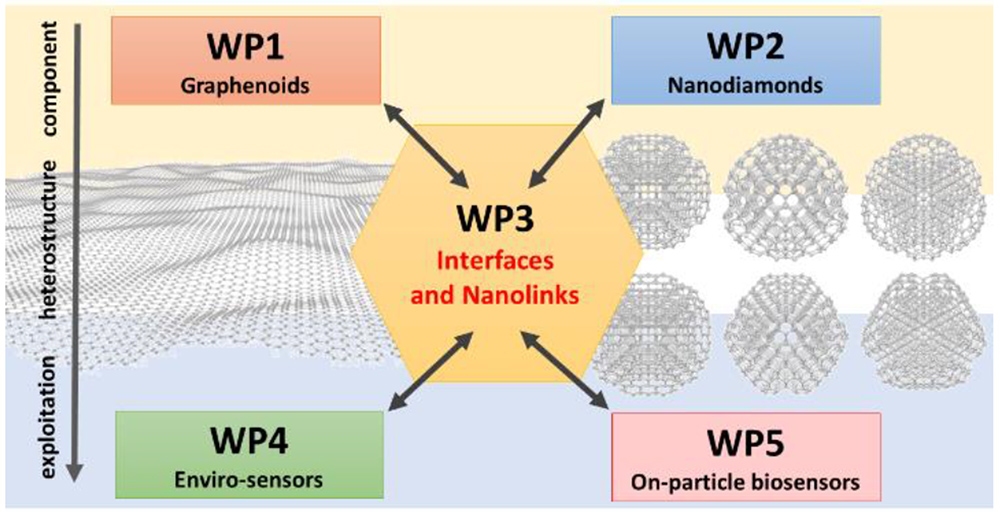Research Plan
-
WP1: Graphenoids

- Activity 1.1 Topographic a structural optimization of substrates
- Activity 1.2 Chemical functionalization and purification of graphenoid carbons
- Activity 1.3 Lithographic structuring of graphenoids and substrates
-
WP2: Nanodiamonds

- Activity 2.1 Preparation of DND
- Activity 2.2 Purification of DND
- Activity 2.3 Intrinsic and surface modifications of DND
-
WP3: Interfaces and nanolinks

- Activity 3.1 Molecular interface graphene – semiconductor
- Activity 3.2 Interface graphene – dielectric with controlled deformation fields
- Activity 3.3 Interface graphene – metal with controlled defects
- Activity 3.4 Linking of graphenoids and nanodiamonds
- Activity 3.5 Fundamental chemical processes at interfaces
-
WP4: Enviro-sensors

- Activity 4.1 Sensors for environmental parameters monitoring
- Activity 4.2 Carbon allotrope interconnection and contact structures
- Activity 4.3 Printed carbon functional electronic structures
-
WP5: Bio-sensors

- Activity 5.1 Pushing detection limitations of nanodiamonds via intrinsic and extrinsic modifications
- Activity 5.2 Polymer interfaces for nanodiamond sensors for in vitro and in vivo applications
- Activity 5.3 Intracellular nanosensors with a spin component

IOCB participation in the project:
The Laboratory of Synthetic Nanochemistry (Petr Cígler, UOCHB) is focused on research of new types of nanoparticles for diagnostics, imaging and therapy of diseases.
The topic proposed in this project is based in part on original findings and knowledge acquired in previous projects solved in the laboratory (for example, Czech Science
Foundation project No. P108/12/0640 and 16-16336S, AZV project No. 15-33094A). Specifically, methodology for preparation of colloidally stable, non-toxic nanoparticles
based on nanodiamonds with implanted color centers was developed, which can be used for synthesis of starting material for some of studies proposed in the project.
However, the concrete nanoparticles, their structure and the preparative methods proposed here are autonomous. To the previous projects, they are related only in
broader sense of the research focus.